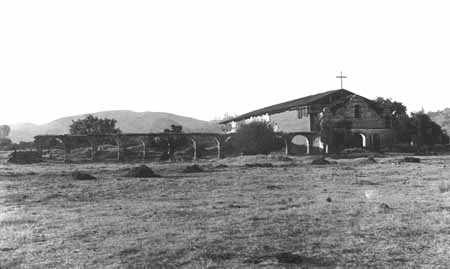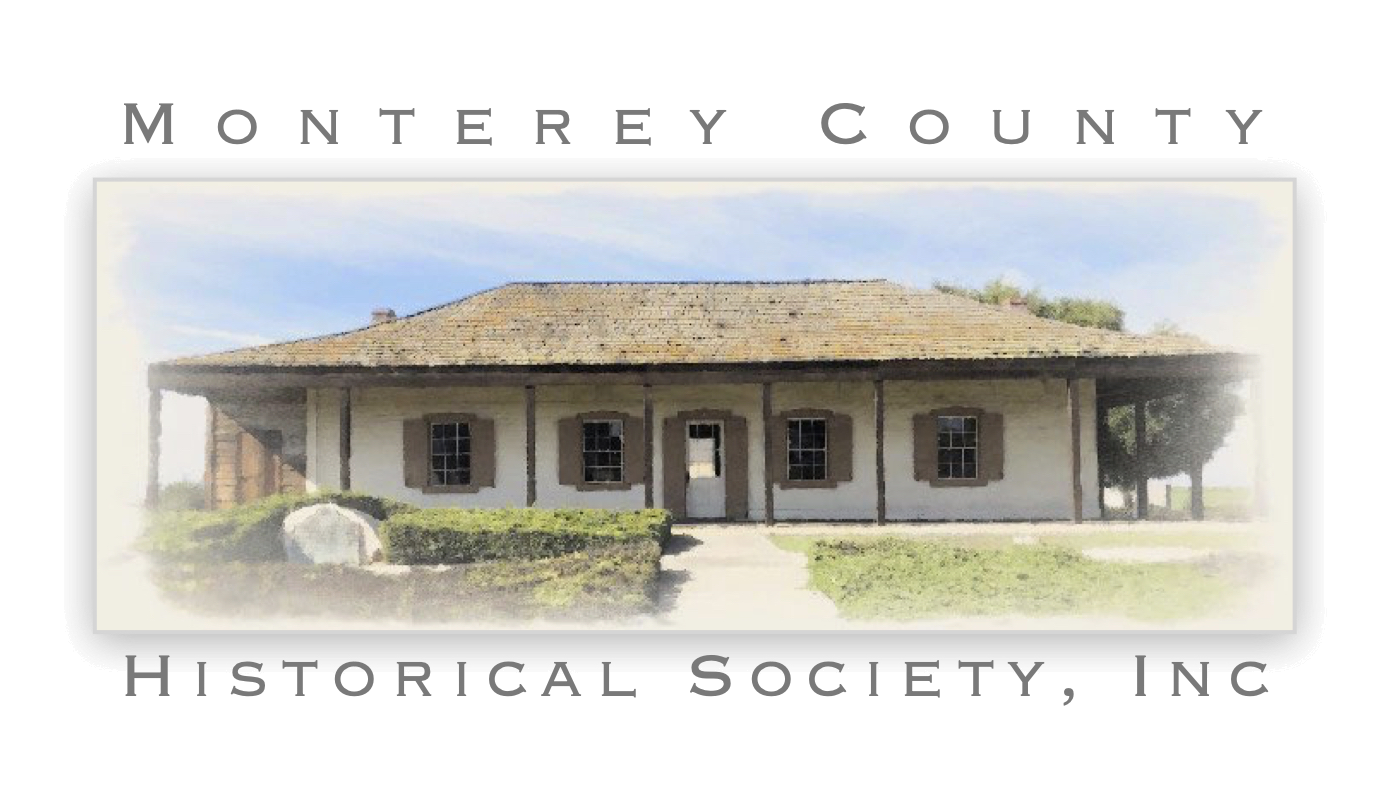by Gary S. Breschini, Ph.D.
Mission San Antonio de Padua was established by Junípero Serra on July 14, 1771 in the San Antonio Valley, in southwestern Monterey County. This location had been favored by the Portolá expedition in 1769. They had given their campsite the name “La Hoya de la Sierra de Santa Lucia.”
San Antonio was the third mission founded in California. The original founding site lay one and one half miles south of the present church. The original location had to be abandoned in 1773 due to drought, and the new site was chosen on the east bank of year-round Mission Creek. Upon Father Palou’s visit to the new site in the same year, he reported that a new church of adobe with a mortar roof, along with a dwelling for the father, and workrooms of the same material had been built to replace the abandoned buildings. The Salinan Indian neophytes had constructed houses of wood and mud for the soldiers and guard, and a large neophyte village of tules and poles as well. In the same report he noted that 158 Indians had been baptized, and that irrigation ditches had been cut from the creek to the cultivated wheat fields.
The 1774 annual report noted 178 Indians living at the mission out of 194 baptisms, that an adobe granary had been constructed, and that a second irrigation ditch had been brought to the corn field. Building of necessary storerooms, workrooms and dwellings continued steadily as the mission family increased to 500 by 1776. In 1778, improvements expanded to include construction of an adobe building on the San Antonio River. Construction and repair kept pace with production and population increases at the mission, where continuous improvements took place in the additions of a grist mill, tannery, numerous storehouses and manufactories, garden walls, corrals, wells, and an extensive network of stone lined irrigation ditches added over the ensuing years.
The padres of the mission reported to Governor Echeandia in 1827 that in addition to the construction at the mission complex, considerable improvements had been made at the various mission outposts as well. In 1820, a house of adobe and tile was constructed at the stockraising outpost at San Benito on the Salinas River, six leagues (the definition of a league varied, but averaged about 2.6 to 3.0 miles) east of the mission, followed by the construction of an adobe corral at that place in 1822. San Benito was used primarily for maintaining the sheep and lambs, as were corrals at San Bartolome del Pleyto. These sites were seven and ten leagues from the mission on the San Miguel Road. In 1823, a large adobe house with tile roof and covered corridor was constructed at Los Ojitos for the use of the neophyte cattlemen, who had used the corrals there since 1810. A second house was built at Rancho San Miguelito for neophyte herders in that region, who had tended cattle there since 1804. Beans and corn were grown at San Miguelito as well. Horses for the guard were kept to the north of the mission at the foot of the Santa Lucias, and mares with their young were kept at the seashore 10 1/2 leagues to the south. Five leagues east of the mission on the opposite side of the Salinas River was a tame horse pasture, used for recuperation of work horses. The necessity for irrigation was explained by the lack of a dependable rain cycle, and the padres qualified the apparent accomplishments of the building program by noting that lack of rainfall had made the mission dependent on outside sources for foodstuffs for several of its years.
Planning and improvements continued at Mission San Antonio after 1822 in spite of the lack of support by the newly established Mexican governorship. Construction took place during this period at all of the outlying ranchos, as well as the mission complex proper. When inventoried in 1835 by government appointed administrators Manuel Crespo and Jose M. Rimirez, Mission San Antonio included various shops, dwellings, church rooms, library, mills, vats, ditches, and other constructions at the mission complex. Outlying holdings included vineyards, orchards, buildings, corrals, and fields at ten associated ranchos: San Carpoforo, San Bartolome (El Pleito), El Tule (Sitio), San Lucas (Sitio), San Benito, San Bernabe, San Miguelito, Los Ojitos, San Timoteo, and San Lorenzo (Sitio).

Sources:
- Bancroft, H.H., The History of California (The History Company, San Francisco, CA, 1886).
- Breschini, G.S., T. Haversat, and R.P. Hampson, A Cultural Resources Overview of the Coast and Coast-Valley Study Areas [California] (Coyote Press, Salinas, CA, 1983).
- Engelhardt, Z., Mission Nuestra Señora de la Soledad (Mission Santa Barbara, Santa Barbara, CA, 1929).


